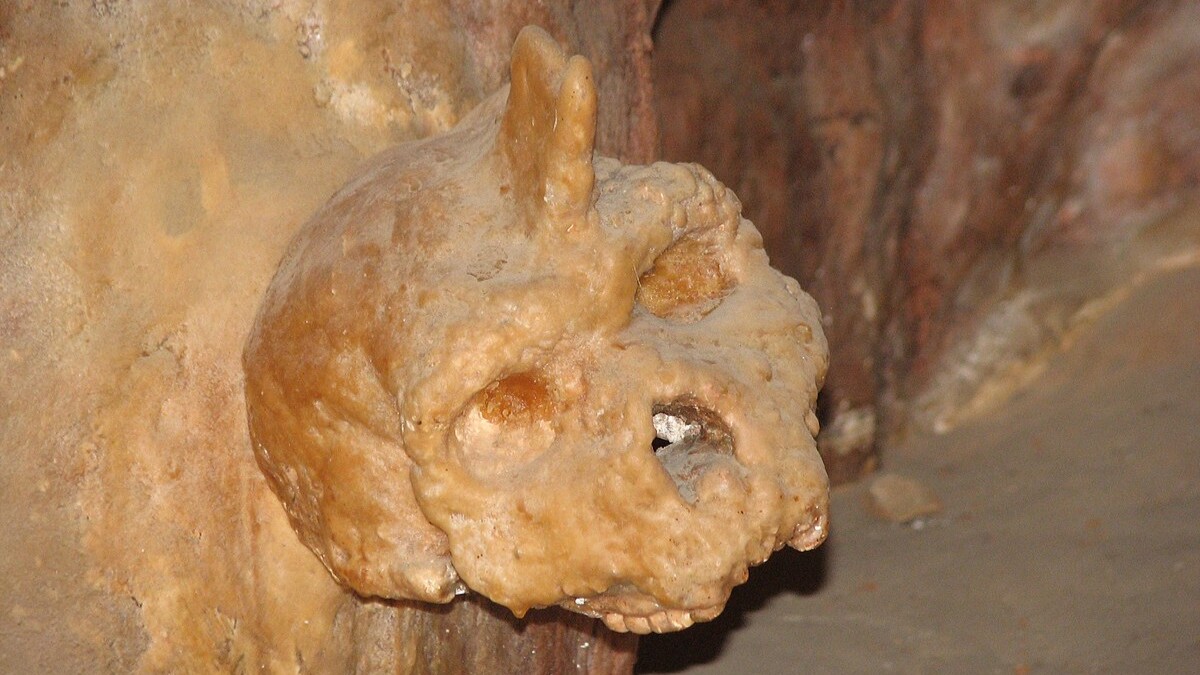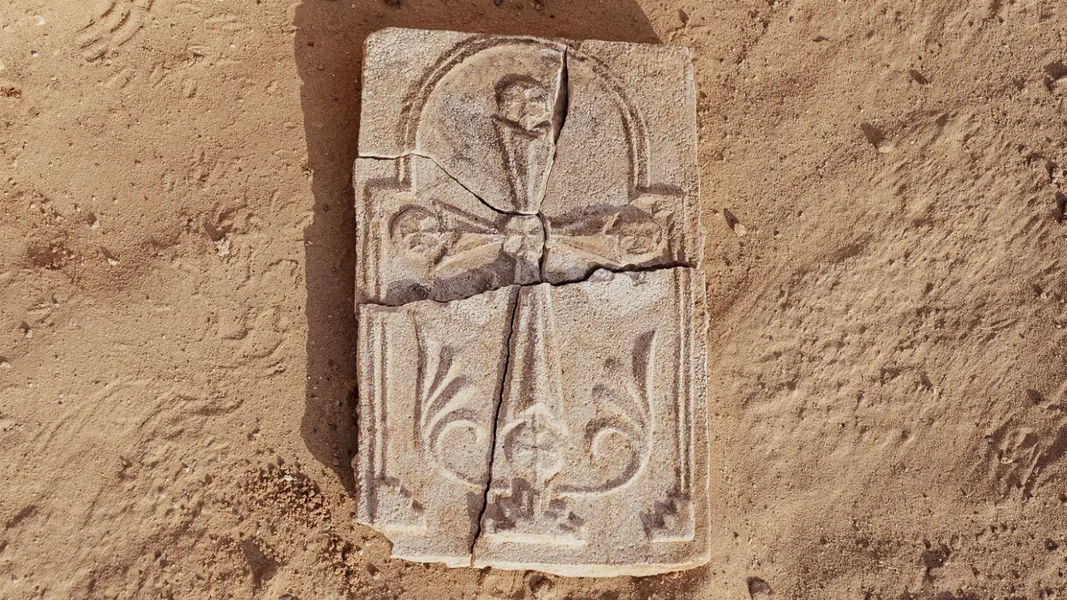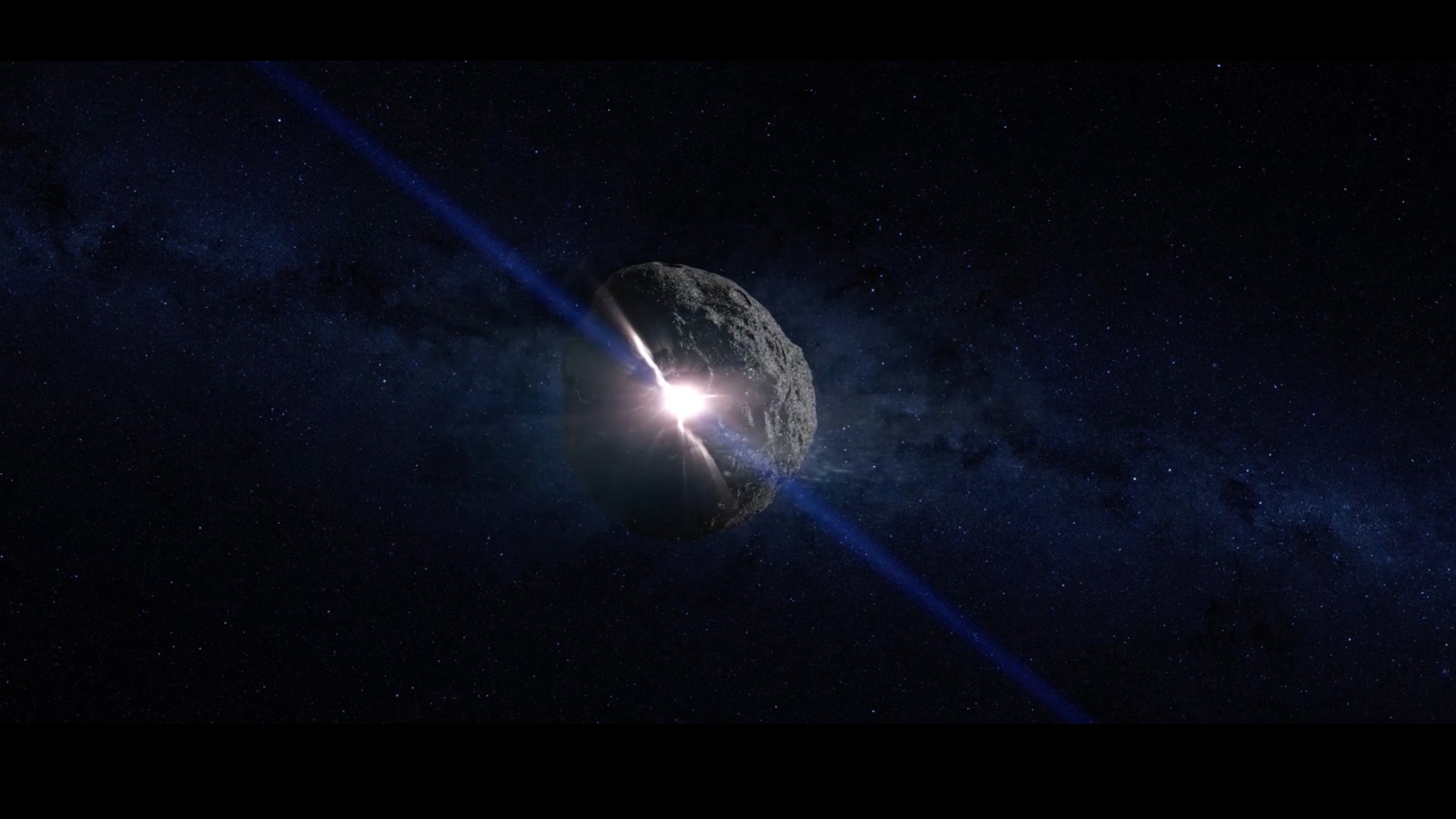A mysterious skull with a stalagmite growing out of its head is about 300,000 years old and neither human nor Neanderthal, a new study finds.
The skull was reportedly discovered attached to the wall of Petralona Cave in northern Greece in 1960. Researchers have since argued about its position on the human family tree and had trouble figuring out its age — until now.
In the new study, published online Aug. 14 in the Journal of Human Evolution, researchers dated calcite (a mineral form of calcium carbonate often found in caves) protruding out of the skull to find that it was at least 277,000 years old. They don’t know precisely how long the skull was in the cave before it began acquiring calcite, but the new estimate helps narrow down previous attempts to date the skull, which have ranged from 170,000 to 700,000 years old.
The findings support previous suggestions that the Petralona individual lived in Pleistocene-era Europe alongside Neanderthals, but was part of a different human group, broadly called Homo heidelbergensis.
The Petralona fossil is distinct from H. sapiens and Neanderthals, study co-author Chris Stringer, a paleoanthropologist at the Natural History Museum in London, told Live Science, “and the new age estimate supports the persistence and coexistence of this population alongside the evolving Neanderthal lineage in the later Middle Pleistocene of Europe”.
Related: ‘It makes no sense to say there was only one origin of Homo sapiens’: How the evolutionary record of Asia is complicating what we know about our species
The Petralona skull, sometimes called the “Petralona Man,” was almost certainly male based on the fossil’s size and robustness, according to Stringer. He also said that the skull’s teeth had moderate wear, so it likely belonged to a young adult.
While records of the skull’s discovery are poor, Stringer noted that there’s evidence to support the idea that it was stuck to the wall by calcite encrustations — the same kind that were protruding out of the skull.
To estimate the age of the calcite, researchers used a method called uranium-series dating. Calcite contains a small amount of uranium, which decays into another radioactive element called thorium over a fixed period. This fixed rate of decay means that researchers can calculate ages based on the calcite’s ratio of uranium to thorium. The skull calcite dates back to around 286,000 years ago, with a high degree of confidence that it’s at least 277,000 years old.
The dating research also suggested that calcite grew quite rapidly in the cave. Stringer noted that it likely didn’t take long for the skull to acquire its first layer of calcite, which would mean the skull is around 300,000 years old. However, the skull could be older than 300,000 years old if the calcite took longer to form.
The estimate of 300,000 years old fits with Stringer and colleagues’ analysis of a similar fossil from Zambia in Africa known as the Kabwe skull. Their 2019 study dated the Kabwe skull, which is often assigned to H. heidelbergensis, at 299,000 years old.
“That fossil is closely comparable to the Petralona one, and I would classify them both as Homo heidelbergensis,” Stringer said.













